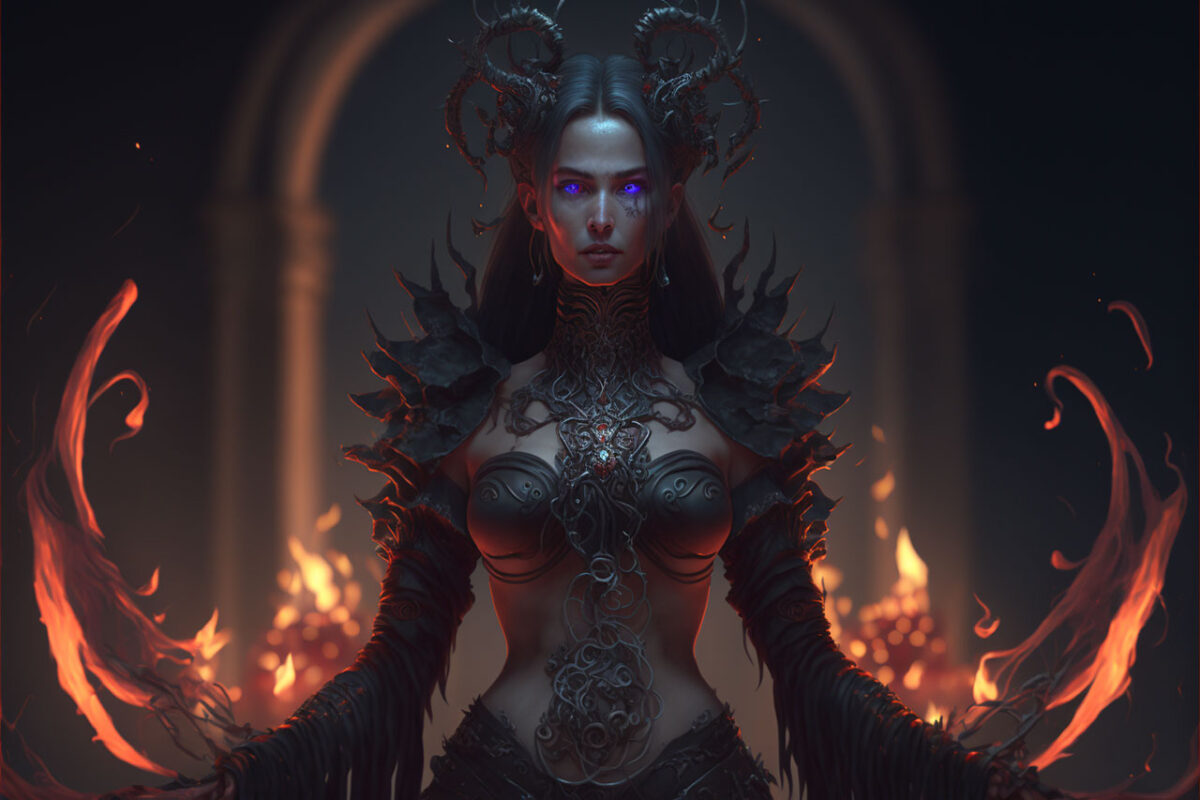Dark feminine art is a form of artistic expression that centers on the darker aspects of femininity. It is a way for artists to explore and express the more shadowy and enigmatic aspects of the female experience, and to challenge traditional notions of femininity.
Dark feminine art often deals with themes of power, sexuality, and the mysterious and unknown. It can be deeply personal, drawing on the artist’s own experiences and emotions, or it can be more universal, exploring the collective unconscious and the collective experiences of women.
Dark feminine art can take many forms, including painting, sculpture, photography, performance art, and more. It can be highly symbolic, using archetypes and mythic imagery to tell stories and convey meaning. It can also be more abstract, using color, form, and composition to create a sense of mystery and depth.
One notable artist who has explored the dark feminine in her work is Frida Kahlo. Kahlo’s paintings often featured strong, powerful women and explored themes of identity, gender, and sexuality. Another artist who has used the dark feminine as a central theme in her work is Cindy Sherman, whose photographs often depict women in unsettling or unsettlingly sexualized roles.
Dark feminine art can be challenging and provocative, but it is also a way for artists to reclaim and celebrate the power and complexity of femininity. By exploring the dark and mysterious aspects of femininity, artists can create a deeper understanding and appreciation for the full range of the female experience.
Table of Contents
Artists with Dark Feminine Art Style
There are many artists who have explored the dark feminine in their work, and popularity varies. Here are a few notable examples:
- Frida Kahlo: Kahlo was a Mexican painter known for her highly personal and symbolic works. A maestro of dark feminine paintings, she explored themes of identity, gender, and sexuality.
- Cindy Sherman: Sherman is an American photographer who has used the dark feminine as a central theme in her work. She is known for creating unsettling or unsettlingly sexualized photographs of women.
- Yoko Ono: Ono is a Japanese-American artist who has explored the dark feminine through performance art, installation art, and other mediums. She is known for her avant-garde and often controversial works.
- Rebecca Horn: Horn is a German installation artist who has used the dark feminine as a central theme in her work. She is known for creating elaborate, symbolic pieces that explore themes of power, sexuality, and the body.
- Tracey Emin: Emin is a British artist who has explored the dark feminine through a variety of mediums, including installation art, painting, and sculpture. She is known for her highly personal and often controversial works.
These are just a few examples of artists who have explored the dark feminine in their work. Many other artists have also used this theme in their art, and their popularity and style may vary.
Themes and Characters in Art of the Dark Feminine
Themes and characters in dark feminine art can vary widely, as different artists may have different approaches and interpretations of the dark feminine. However, some common themes and feelings that may appear in dark feminine art include:
- Power: The dark feminine is often associated with power, and artists may explore this theme through representations of strong, assertive women, or through more subtle or symbolic imagery.
- Sexuality: The dark feminine is also often associated with sexuality, and artists may explore this theme through representations of sexual desire, sensuality, or sexualized bodies.
- Mystery: The dark feminine is often associated with the unknown or the mysterious, and artists may explore this theme through the use of symbolism, mystery, or the supernatural.
- The goddess: The dark feminine is sometimes associated with the goddess, an archetypal figure that represents the female divine. Artists may explore this theme through the use of mythic or religious imagery.
- The femme fatale: The femme fatale is a character who is seductive and dangerous, and she is often associated with the dark feminine. Artists may explore this character through representations of dangerous or alluring women.
- The witch: The witch is another character that is often associated with the dark feminine, and artists may explore this character through representations of magical or supernatural women.
Again, these are just a few examples of themes and characters that may appear in dark feminine art. Different artists may have their own unique approaches and interpretations of the dark feminine, and may explore different themes and characters in their work.
What are some ways to get started in creating dark feminine art?
There are many ways to get started in creating dark feminine art, and the approach you take will depend on your personal interests and goals. Here are a few ideas to get you started:
- Explore different mediums and techniques: Experiment with different materials, such as paint, charcoal, digital art software, and more to find what you enjoy working with.
- Look at the work of other artists: Study the work of artists who create dark feminine art to get inspiration and ideas. Consider the themes, symbols, and techniques they use, and how you can incorporate them into your own work.
- Find your own voice: As you create dark feminine art, think about what themes and messages you want to convey. What are you passionate about, and how can you use your art to express those ideas?
- Practice, practice, practice: The more you create, the better you will become. Don’t be afraid to make mistakes or try new things – that’s how you’ll grow and improve as an artist.
- Share your work: Consider sharing your art online or exhibiting it in a gallery or other public space. This can help you get feedback, make connections with other artists, and build a following. A few places to start are Deviant Art and ArtStation.
What are some common themes in dark feminine art?
Common themes in dark feminine art may include:
- Empowerment and strength
- Feminine mystery and magic
- The complexities and contradictions of femininity
- The intersection of femininity and darkness
- The shadow side of femininity
- The power of the feminine to transform and heal
- The reclamation and celebration of the feminine divine
- The deconstruction and subversion of traditional feminine roles and stereotypes
- The exploration of the feminine unconscious and psyche
These are just a few examples, and there may be other themes present in dark feminine art as well. It’s important to note that dark feminine art can take many forms and explore a wide range of themes, and that there is no one-size-fits-all definition of what dark feminine art is or should be.
Examples of Dark Feminine Art
These examples range from dark feminine drawings and paintings to photographic and performance art showcasing dark feminine characters in enigmatic scenarios.

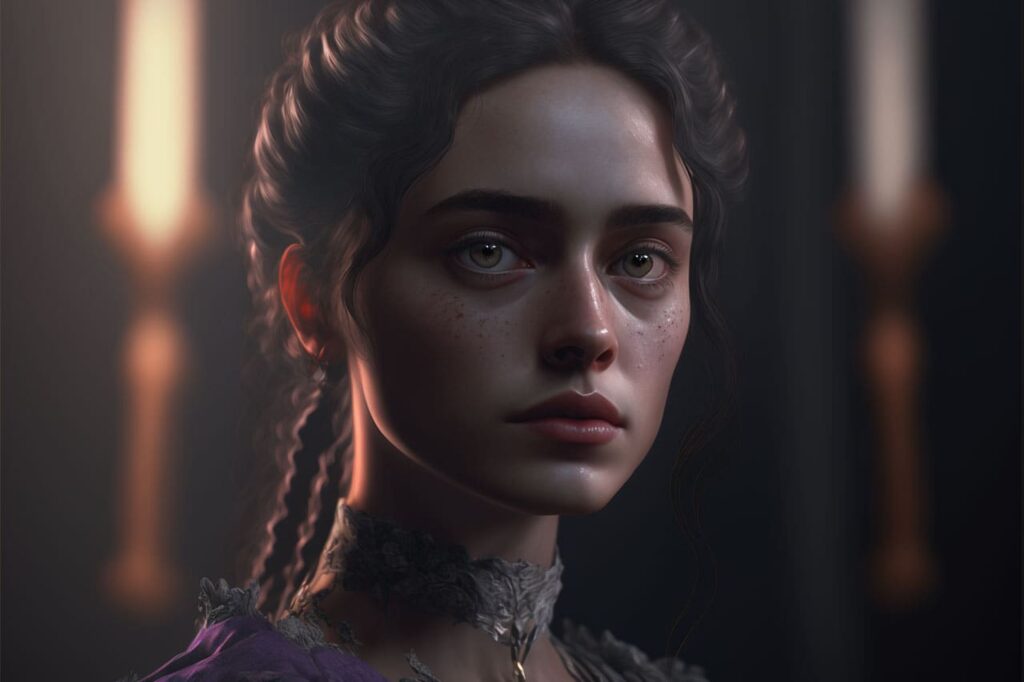
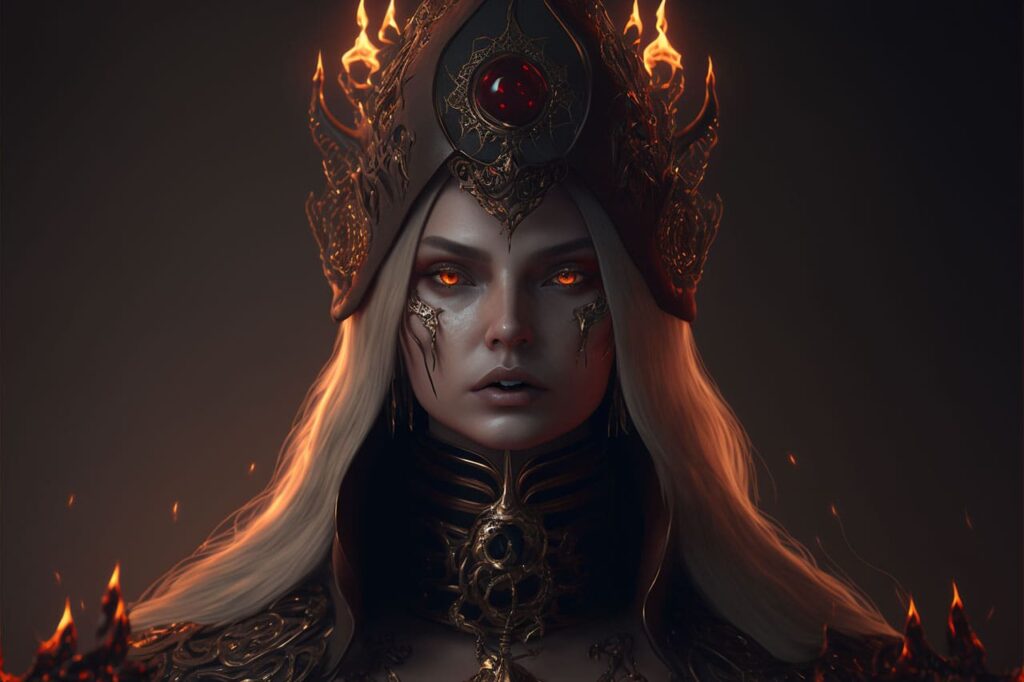
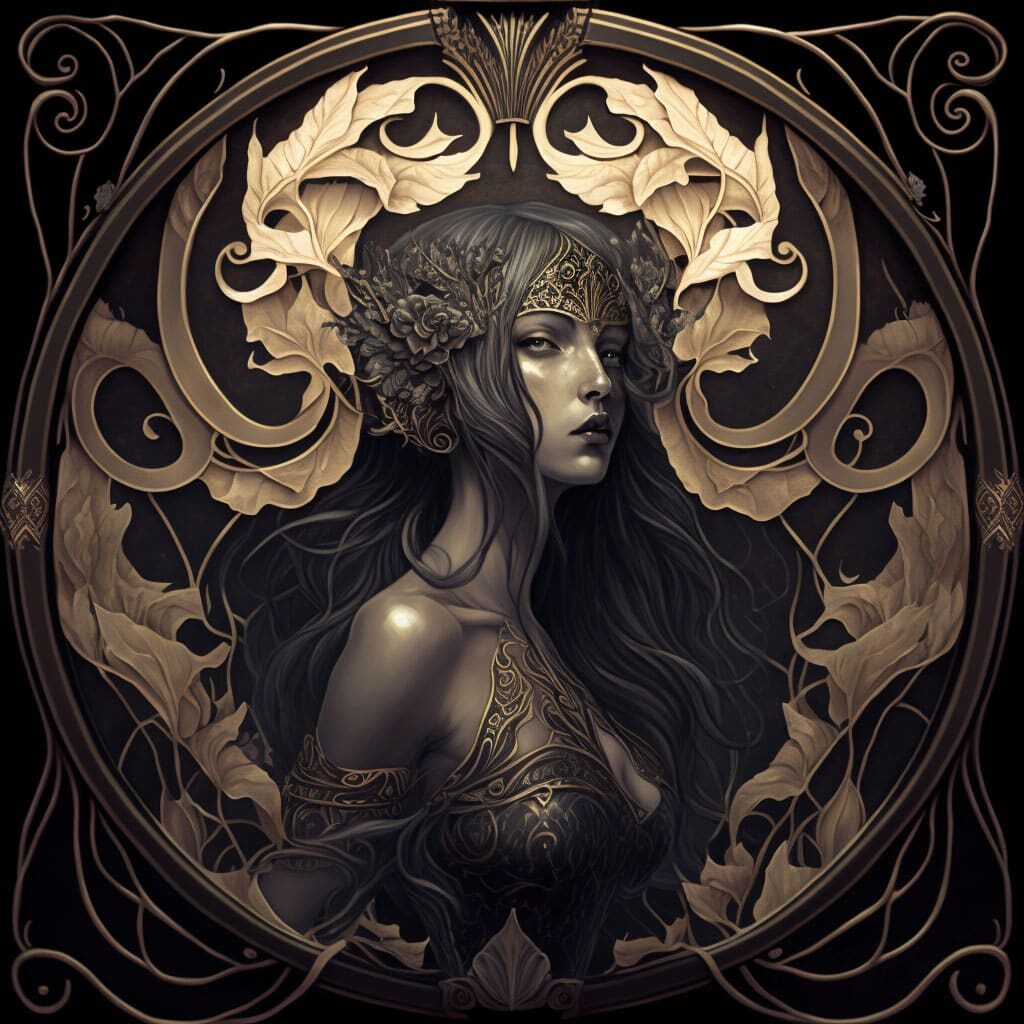
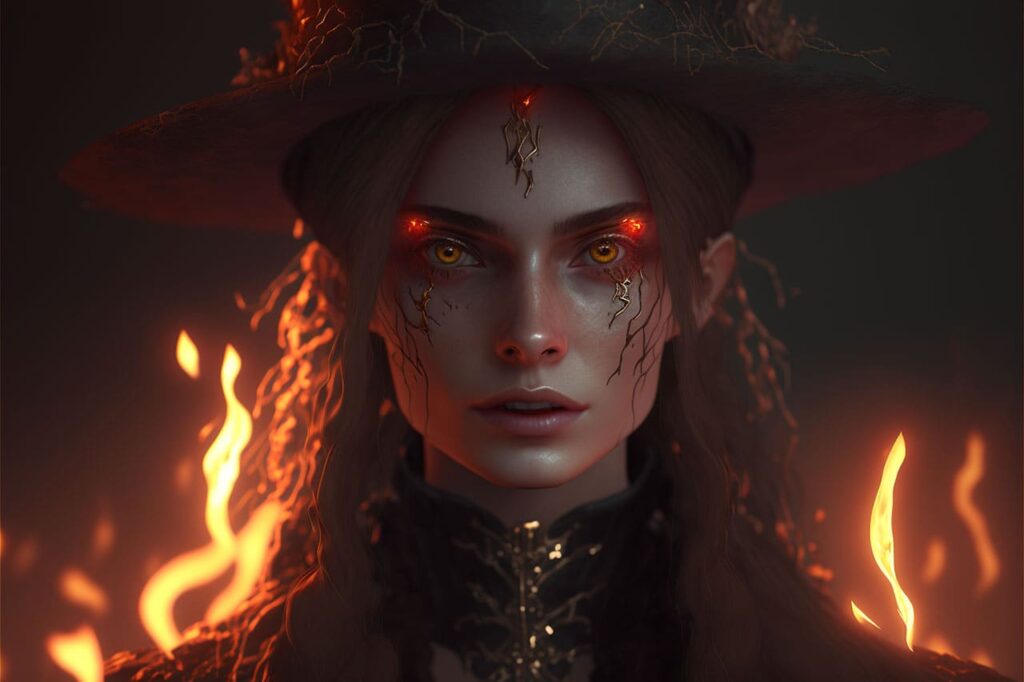

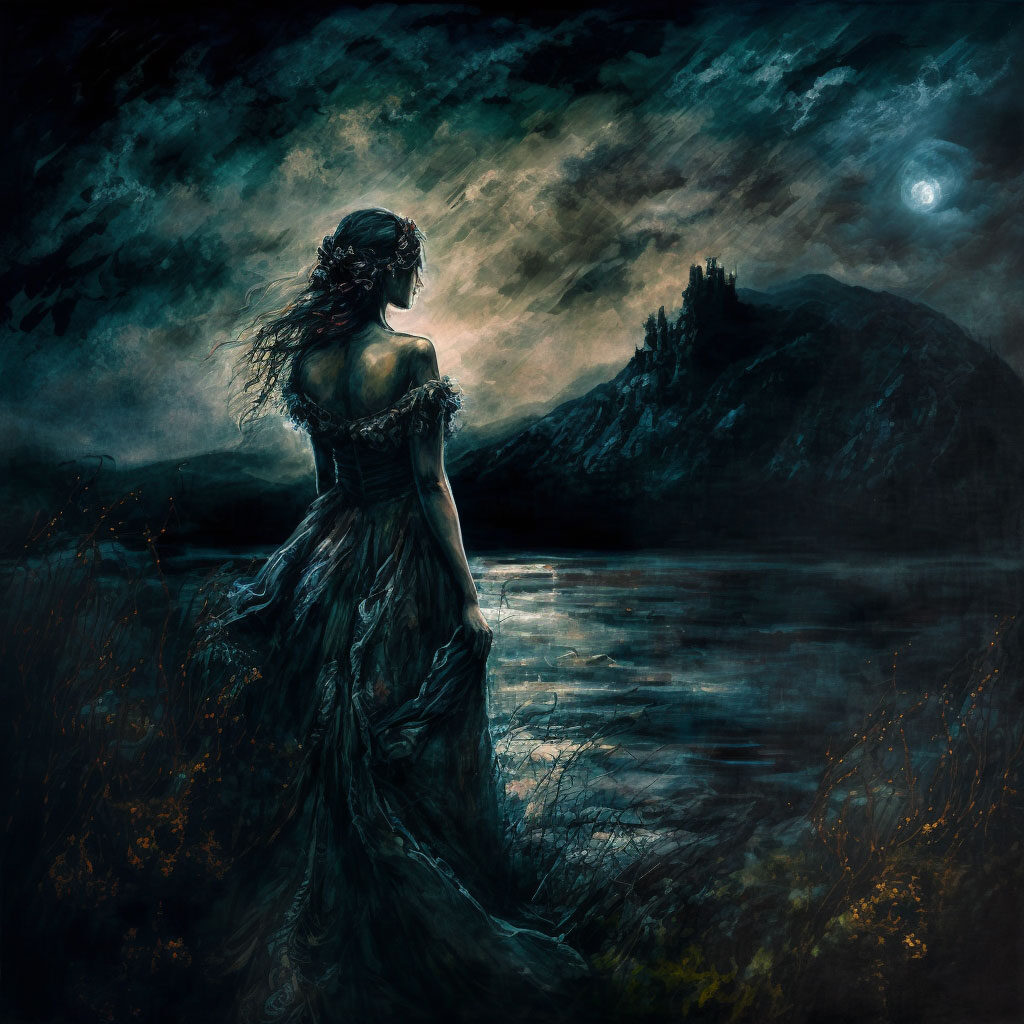
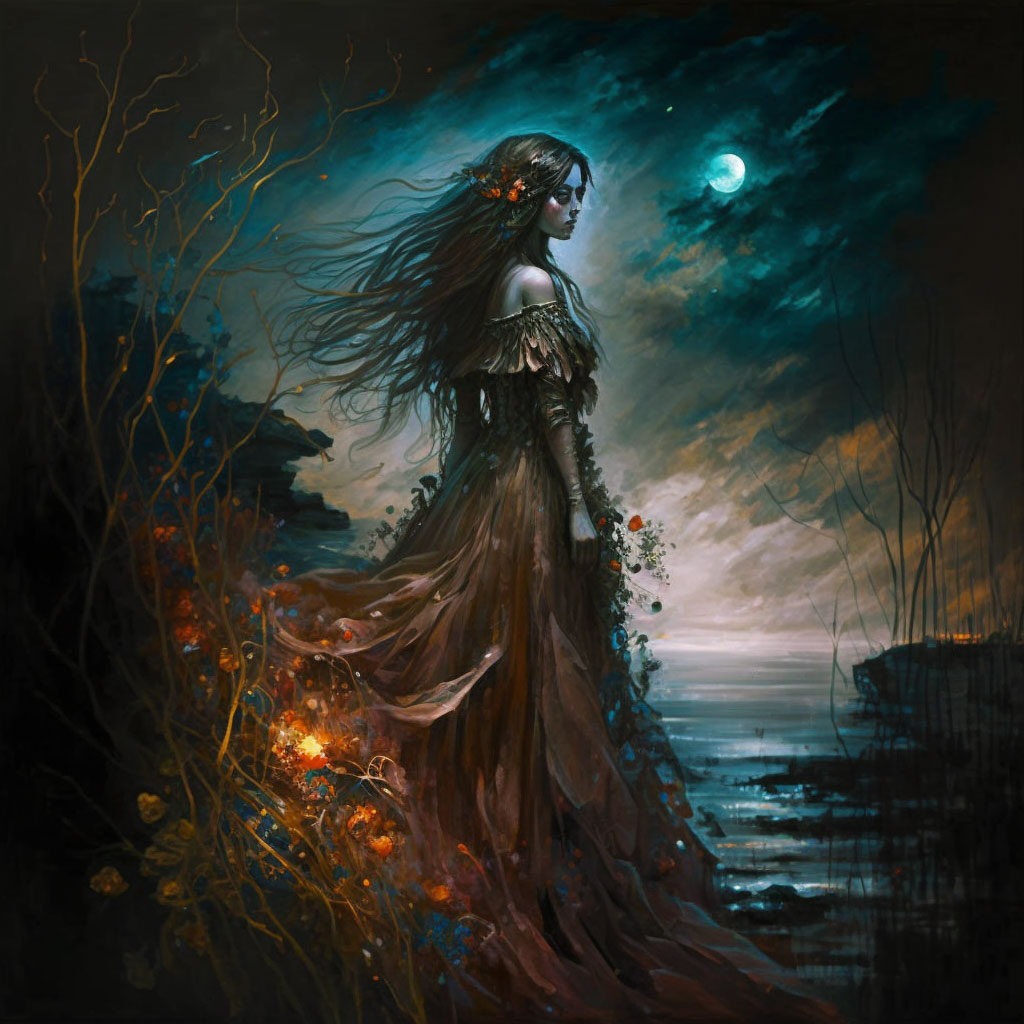
Typical Aspects of Dark Feminine Characters
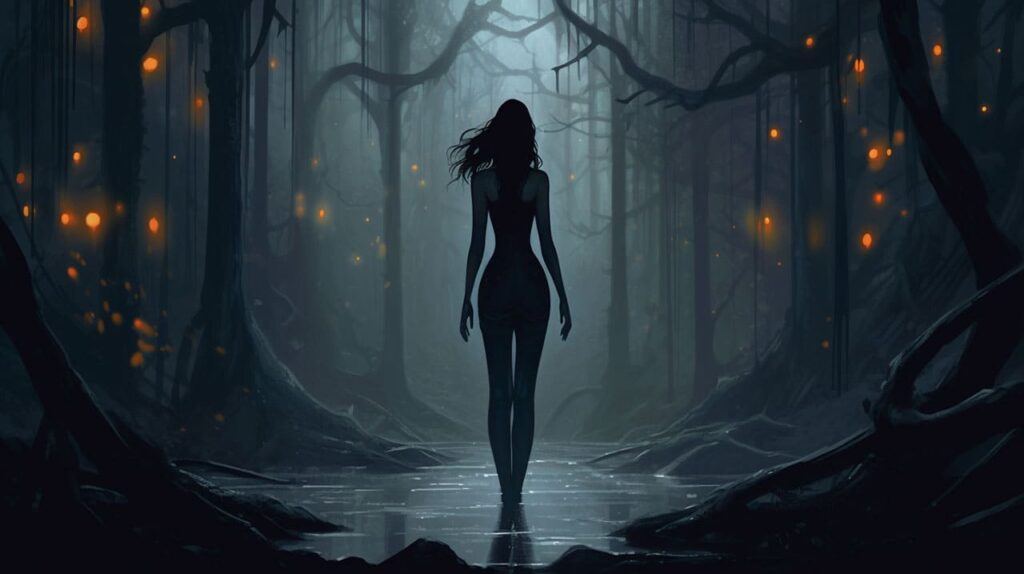
Dark feminine characters often blend mystery and strength, challenging societal norms.
Dark feminine characters are often portrayed with a unique set of characteristics that embody strength, mystery, and a sense of rebellion against societal norms. These characters tend to possess a deep understanding of their own power and are unafraid to embrace their darker side. They exude an aura of confidence and independence, refusing to be confined by traditional expectations of femininity.
Dark feminine characters are often complex and multi-dimensional, displaying a range of emotions from vulnerability to resilience. They challenge the notion of what it means to be a woman, offering a refreshing alternative to the stereotypical damsels in distress.
One common aspect of dark feminine characters is their connection to the natural world and its darker elements. They are often associated with creatures of the night, such as wolves, ravens, or serpents, symbolizing their wild and untamed nature. These characters are deeply in tune with their own instincts and intuition, harnessing the power of nature to navigate through life’s challenges.
Their affinity for the night and darkness is not born out of fear, but rather an understanding that it holds its own unique beauty and power. Dark feminine characters often possess a certain allure and magnetism, drawing others towards them with an irresistible combination of strength and vulnerability.
Frequently Asked Questions About Dark Feminine Art
What does dark femininity mean?
Dark femininity is a concept that challenges traditional notions of femininity by embracing and exploring the darker, more complex aspects of womanhood. It represents a departure from the traditional ideal of women being gentle, nurturing, and submissive. Instead, dark femininity celebrates strength, independence, and the exploration of deeper emotions and experiences.
Dark femininity acknowledges the existence of the shadow self, the aspects of one’s personality that are often suppressed or hidden due to societal expectations. It recognizes that women, like all individuals, possess a range of emotions and desires that may not fit neatly into conventional norms. It embraces the complexities of womanhood, including the capacity for anger, assertiveness, and embracing one’s own power.
Dark femininity also encompasses the exploration of themes such as sensuality, sexuality, and mystery. It recognizes that women have desires and passions that extend beyond societal expectations, and it encourages the exploration and expression of these aspects of femininity. Dark feminine individuals often have a strong sense of self and are unafraid to challenge societal norms, embracing their own unique identity and resisting the pressures to conform.
In essence, dark femininity represents a celebration of the multifaceted nature of womanhood, embracing both light and shadow, strength and vulnerability, and defying societal expectations to define what it means to be a powerful and authentic woman.
What does it mean to embody dark feminine?
To embody dark femininity is to fully embrace and express the qualities and characteristics associated with the concept of dark femininity. It means embracing the complexity, strength, and independence that come with being a woman and delving into the deeper, more mysterious aspects of femininity.
Embodying dark femininity involves embracing one’s own power and asserting it confidently, without fear of judgment or societal expectations. It means recognizing and honoring the full range of emotions, including those that are considered “dark” or unconventional, and allowing them to be expressed authentically. This embodiment requires a deep self-awareness and acceptance of one’s own desires, passions, and shadows.
What is the dark feminine energy?
Dark feminine energy refers to a powerful and transformative force that resides within individuals who identify as feminine. It represents the aspects of femininity that are often associated with depth, mystery, and intensity. Dark feminine energy encompasses a range of qualities and characteristics that go beyond societal stereotypes and expectations.
At its core, dark feminine energy embodies strength and resilience. It taps into the depths of emotions, embracing both light and shadow aspects. It is unafraid to explore and express the full range of human experiences, including the darker and more challenging emotions such as anger, grief, and passion. Dark feminine energy acknowledges that these emotions are not inherently negative, but rather valuable sources of wisdom and growth.
What are some common dark feminine outfits?
Common dark feminine outfits often incorporate elements that reflect a sense of mystery, sophistication, and an edgy aesthetic. These outfits allow individuals to express their unique style while embracing the essence of dark femininity. Here are some examples of common elements and styles found in dark feminine outfits:
Black Lace: Lace is a timeless fabric associated with femininity, and in a dark feminine outfit, it takes on a more intricate and alluring appearance. Black lace dresses, tops, or skirts can add a touch of elegance and sensuality to an outfit.
Leather: Leather garments and accessories are frequently seen in dark feminine outfits. A leather jacket, pants, or boots can instantly add a rebellious and powerful edge to a look.
Flowy Dresses and Maxi Skirts: Dark feminine outfits often feature flowy dresses or maxi skirts in rich, dark colors such as burgundy, deep purple, or midnight blue. These garments evoke a sense of ethereal beauty and movement.
Sheer Fabrics: Sheer fabrics, such as chiffon or mesh, can be incorporated into dark feminine outfits to create a sense of allure and mystery. Layering sheer tops or dresses over darker undergarments or bodysuits can create a captivating and sensual look.
Victorian and Gothic-Inspired Pieces: Dark feminine fashion draws inspiration from Victorian and gothic aesthetics. Incorporating elements like high-neck collars, ruffles, corsets, and lace-up details can add a touch of historical elegance and drama to an outfit.
Statement Accessories: Accessories play a crucial role in dark feminine outfits. A wide-brimmed hat, choker necklaces, stacked rings, and statement earrings can enhance the overall look, adding an extra touch of glamour or a hint of mystique.
Dark Color Palette: The color palette in dark feminine outfits typically revolves around deep, rich tones such as black, burgundy, navy, and emerald green. These colors exude a sense of sophistication and create a visually striking ensemble.
Dramatic Makeup: Dark feminine outfits are often paired with bold and dramatic makeup looks. Deep red or burgundy lips, smoky or winged eyeliner, and dark, intense eyeshadows can accentuate the mysterious and captivating vibe of the overall ensemble.
Remember, dark feminine outfits can be highly personalized, and individual style preferences may vary. The key is to embrace your unique interpretation of dark femininity, incorporating elements that resonate with your personal aesthetic and express your inner strength and allure.
